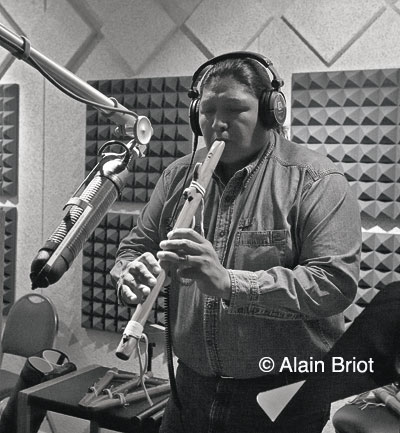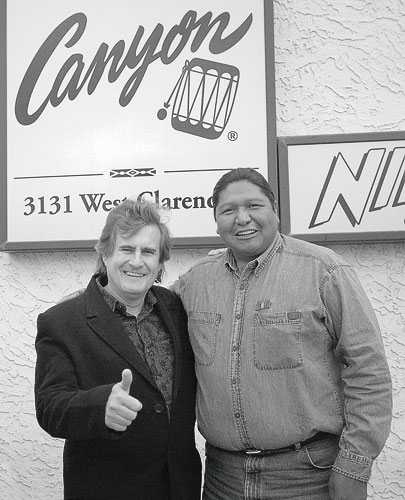
|
Becoming a Music Producer
Other essays in this series
Introduction
I am often asked where I find the inspiration for the many different projects I am involved in. The secret, if there is one, is simple: you cannot remain creative if you do not get involved in new endeavors. You have to open new doors, explore new possibilities, venture into new mediums and explore other creative ways.
This is exactly what I did with the Navajoland CD and DVD. These two projects, which are really one project consisting of two different parts, are the result of collaborative work between myself and Travis Terry. The idea was to bring music and photographs together. However, I did not want the music to be simply a background for the photographs, or the photographs to be simply illustrations for the CD covers. I have seen too many of those. Nothing wrong with this approach. It was just not my style or my vision for this project.
What I wanted was a symbiosis between the music and the photographs. To achieve this, we set out to select photographs for which the music was be composed. I then proceeded to write a short description of the mood I wanted for each composition based on the mood of each photograph. The photographs were created prior to the music, however I have been listening to Travis' music for years (his first album was published over 4 years ago) and many of the photographs I selected had been created with Travis' music in mind. Furthermore, both Travis and I have lived in Canyon de Chelly for many years, myself over 7 years and Travis longer than that, and although I now live further South in Arizona, in the Sonoran Desert area (which is also beautiful by the way) I return to Canyon de Chelly -to Navajoland- frequently. In fact, I will be there in just a few days as I am about to return for yet another visit and meet with Travis again.

Travis playing Navajoland in the Canyon Records recording studio
Photograph by Alain Briot
Becoming a music producer
I took on most of the responsibilities for this project, including purchasing the copyright for the music, working with the sound engineer and with Travis during the recording, designing the CD covers, tray, insert and poster, and finally taking care of the production of the CD. The only thing I did not do was the recording for which I hired Jack Miller who many consider to be the best in the business when it comes to recording Native American Artists, and who has done virtually all the recordings for Carlos Nakai, one if not the most famous Native American Flute players. Jack also recorded all the albums of Sharon Burch, a Navajo vocalist and one of my favorite artists.
I have to say that I love being a music producer. I just fit naturally into the role that is required to perform this function. If you follow my activities, you know that I only do what I love and that I take business decisions based on this very fact. It may seem strange if you are new to this concept, but having followed it most of my life I can say it has made me extremely successful. Try it, if you haven't yet. I believe you will be pleasantly surprised!
At any rate I fit naturally into the role of music producer. At first I wondered why, until I realized that a good producer needs to be an artist himself. Being an artist allows me to not only understand how artists work, but also know what their needs and concerns are. It allows me to act in a supporting role, providing the infrastructure necessary for the artistic creation process. In other words, a producer must be inspired himself in order to instill, nurture and foster inspiration in the artist.

Travis and I after completing the recording for Navajoland
Photograph by Natalie Briot
In our day and age we have become acustomed to people doing one thing and one thing only. So much so that we have come to consider it the norm. Our language reflects it, with sayings such as "you can only do one thing well" or similar statements. The fact is that this is highly unusual. If you look back, historically creative individuals were known for being engaged in multiple endeavors. The term Renaissance Man, used to denotate an individual who makes use of many talents, comes actually out of the historical record and was fostered by such people. Our time is quite unusual in this regard, and in my view the current paradigm when it comes to the number of activites one can engage in (namely: one) is due to the ever-increasing demands placed on our time and to the ever-increasing shortage of available time we have.
At any rate, finding out if the Navajoland CD is up to the level of my photography, or vice-versa, is easy. You can listen to excerts from the Navajoland CD on the Beautiful-Landscape podcast.
May you have great light and walk in beauty.
Alain Briot
Essay and photographs Copyright © Alain Briot 2006
All rights reserved worldwide
. |
 |
|
|
|
|